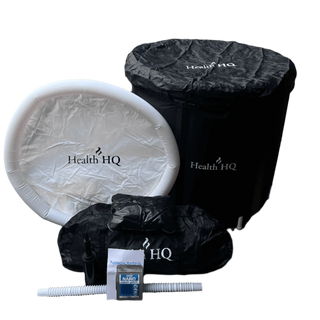Saunas and Respiratory Health: Breathing Easier in the Heat
Saunas have been used for centuries as a means to promote relaxation, improve circulation, and support overall wellness. But did you know that saunas can also play a significant role in respiratory health? For individuals with chronic respiratory conditions or those simply looking to improve their lung function, incorporating sauna sessions into a wellness routine can offer remarkable benefits. Here’s how saunas can support better breathing and respiratory well-being.
- Clears Congestion and Opens Airways
The high temperatures in a sauna, combined with the humidity often present in steam saunas, help to loosen mucus and clear congestion in the nasal passages and lungs. This effect can be particularly beneficial for individuals suffering from colds, allergies, or sinus infections. By relaxing the airways and promoting better airflow, saunas can provide temporary relief from symptoms of respiratory discomfort.
- Improves Lung Function
Regular sauna use has been linked to improved lung capacity and function. Studies have shown that the heat and humidity in saunas can enhance pulmonary ventilation and help strengthen the respiratory muscles. This is especially beneficial for people with asthma or chronic obstructive pulmonary disease (COPD), as sauna sessions may alleviate symptoms such as shortness of breath and wheezing.
- Reduces Inflammation
Inflammation in the respiratory tract can lead to discomfort and chronic conditions like bronchitis or asthma. Saunas stimulate an anti-inflammatory response in the body by increasing circulation and promoting the release of heat-shock proteins. This helps reduce inflammation in the airways and may improve symptoms for those with respiratory disorders.
- Supports Detoxification
While sweating is often associated with detoxifying the skin, it also has a positive impact on the respiratory system. Toxins and pollutants we inhale can accumulate in the lungs over time. Saunas encourage the body to eliminate these toxins through perspiration, indirectly supporting a healthier respiratory system.
- Boosts Immune Function
The elevated temperature in a sauna mimics a mild fever, which is a natural immune response. This can stimulate white blood cell production and enhance the body’s ability to fight off infections, including those that target the respiratory system. Regular sauna use may contribute to fewer respiratory infections and a stronger immune defense.
Tips for Using Saunas to Support Respiratory Health
- Stay Hydrated: Drink plenty of water before and after your sauna session to replace fluids lost through sweating and support mucosal hydration in the respiratory tract.
- Start Slowly: If you’re new to saunas, begin with shorter sessions at a lower temperature to allow your body to adjust.
- Choose the Right Sauna: Steam saunas can be especially beneficial for respiratory health due to the added humidity, which soothes airways and helps loosen mucus.
- Consult a Doctor: If you have a chronic respiratory condition, consult your healthcare provider before starting regular sauna use to ensure it’s safe and appropriate for you.
Conclusion
Saunas are more than just a place to relax; they offer powerful benefits for respiratory health. From clearing congestion and reducing inflammation to boosting lung function and supporting detoxification, saunas can be an effective tool for breathing easier and improving overall wellness. Whether you’re dealing with a chronic condition or simply looking to enhance your respiratory health, regular sauna use could be a transformative addition to your self-care routine. So, step into the heat and let your lungs thank you!








